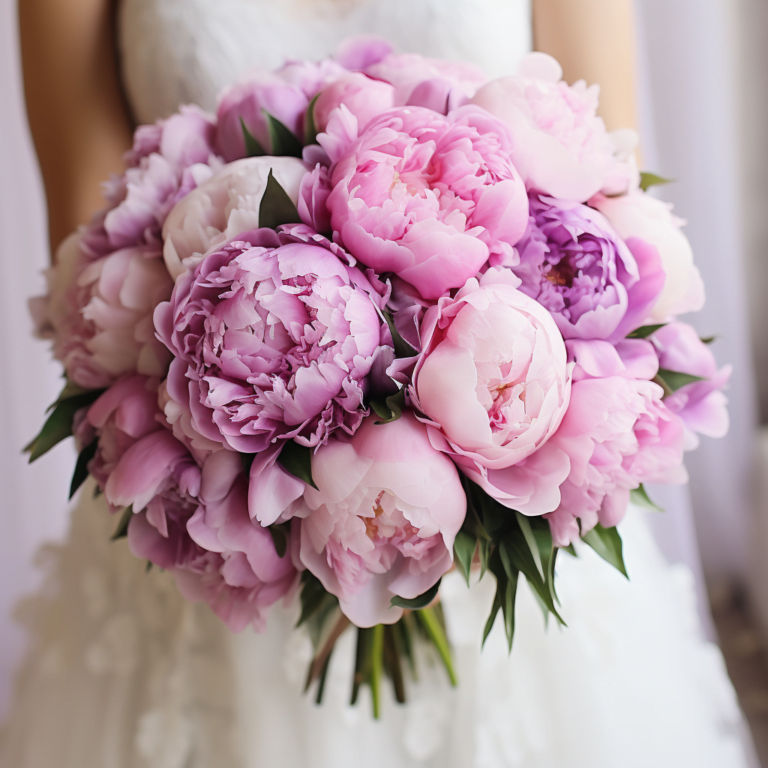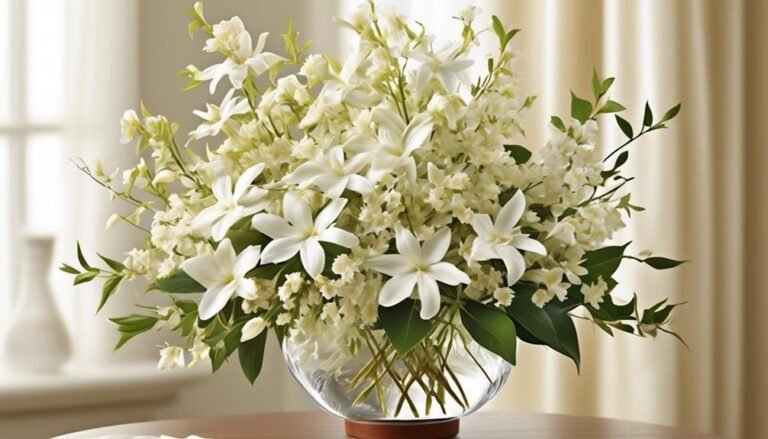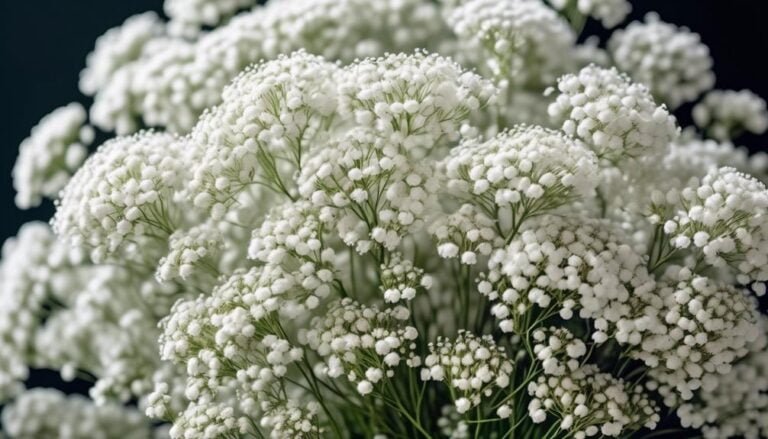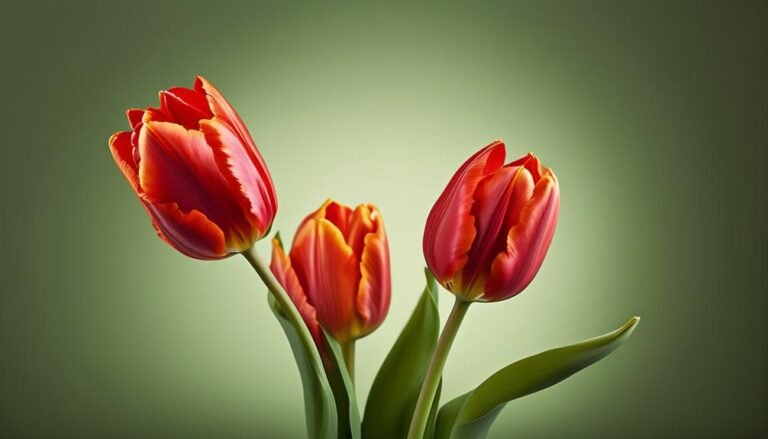Popular Types of Florist Flowers – Clematis
Clematis is a popular choice among florists due to its long-lasting blooms and wide range of colors. This flowering plant belongs to the Ranunculaceae family and is known for its stunning appearance and ability to climb and cover structures. With over 300 species, clematis offers a diverse color spectrum, including shades of purple, blue, pink, and white, making it a versatile option for floral arrangements.
Clematis plants require well-drained soil, full sun for the vines, and cool roots. They are also known for their ability to thrive in various climates, making them a popular choice for gardeners and flower enthusiasts alike. Pruning is essential for clematis plants to encourage new growth and maintain a healthy appearance.
In conclusion, clematis is a fascinating and beautiful flower that adds elegance to any floral arrangement or garden. Its long-lasting blooms, vibrant colors, and easy care requirements make it a top choice for florists and gardeners. Whether adorning pergolas, fences, or trellises, clematis is sure to captivate with its enchanting beauty.
Scientific Name
Clematis, a genus of around 300 species in the Ranunculaceae family, gets its scientific name from the Greek word 'klema,' highlighting its vine-like nature.
These plants are renowned for their climbing vines and vibrant flowers.
Cultivation of clematis dates back centuries, with evidence of its cultivation found in ancient civilizations like China and Japan.
In Japanese culture, clematis symbolizes mental fortitude and courage, while in Chinese culture, it represents ingenuity and intelligence. In Western societies, it's associated with creativity and inspiration.
The diverse symbolism of clematis showcases its widespread cultivation and popularity across various cultures.
Understanding the scientific name of clematis sheds light on its botanical classification and underscores its rich history and cultural significance.
Background History
Clematis, with its rich history dating back centuries, has left a lasting impact on horticulture and gardening worldwide. Its global presence spans across Europe, Asia, and North America, showcasing its adaptability to diverse climates and environments.
Introduced to Europe in the 16th century, clematis quickly became a beloved addition to gardens, admired for its ornamental beauty and varied flowering patterns. The 18th and 19th centuries marked a period of significant breeding advancements, leading to the development of numerous clematis cultivars with distinct characteristics, expanding the options available to gardeners.
During the Victorian era, clematis held a special place in the hearts of gardeners and extended its allure beyond gardens, becoming a popular subject in art and literature, symbolizing various virtues and sentiments.
The enduring cultural significance of clematis is a testament to its ability to captivate and inspire individuals across different time periods and geographical locations.
Physical Description

Clematis flowers come in a stunning variety of shapes, textures, and sizes, making them a popular choice for floral arrangements. Some varieties have nodding bell-shaped blooms, while others boast lantern-shaped or star-shaped flowers, adding diversity to floral designs.
The textures of clematis flowers are equally remarkable, with textured surfaces, crimped margins, twisted tips, and a satin sheen, offering a tactile and visual delight.
Clematis plants also vary in size, with some being compact and ideal for smaller arrangements, while others can reach up to 20 feet in height, providing a striking vertical element. Trailing clematis varieties are well-suited for pot arrangements and add a cascading effect to garden compositions.
The colors of clematis flowers range from deep reddish-purple to pale bluey-mauve, with hints of rose pink or rosy-violet shading, making them a popular choice for a wide range of floral designs and artistic expressions.
Colours and Characteristics
Clematis flowers come in a wide array of vibrant colors and distinctive characteristics, making them a popular choice for enhancing floral arrangements. With their broad spectrum of hues, from pinky-red to pale bluey-mauve, clematis flowers add a burst of variety to floral displays. Their diverse range of flower shapes, from twisted bell-shaped to lantern-shaped, creates stunning focal points in bouquets. Some Clematis varieties also boast a delicate fragrance, adding an extra dimension to the sensory experience of the floral display.
The sturdy stems of Clematis make them easy to work with in floral designs, and they've a long vase life, lasting up to two weeks. Clematis flowers hold symbolic meanings and cultural significance in different societies and have been cherished for their beauty and versatility in various floral traditions. Their striking colors and distinctive characteristics make them a valuable addition to any floral arrangement, whether for formal events or informal settings.
Varieties Available

Clematis Varieties: A Stunning Array of Options
Clematis Abundance (Clematis 'Abundance') features pinky-red flowers with a textured surface and crimped margins. It thrives in well-drained soil and benefits from a sunny location with shaded roots.
Clematis Alba (Clematis integrifolia) presents pure white bell-shaped flowers with an occasional hint of blue. It prefers a sunny or partially shaded spot with cool and moist roots.
Clematis Alionushka (Clematis 'Alionushka') offers deep mauve-pink nodding bell-shaped flowers and requires fertile, well-drained soil and a sunny position for optimal growth.
Clematis Blekitny Aniol (Clematis 'BLUE ANGEL') showcases pale mauvy-blue flowers with a satin sheen and flourishes in fertile, well-drained soil.
Clematis Dark Eyes (Clematis 'Dark Eyes') produces almost black flowers maturing to a deep purple with a velvety sheen. It requires a sunny location, cool roots, and moist, well-drained soil.
Seasonal Availability
Clematis flowers offer seasonal versatility, blooming from early spring to late fall. Their vibrant colors and unique shapes make them ideal for diverse floral arrangements. These blooms hold symbolic significance, adding meaning to arrangements for various seasons and events.
Care Tips
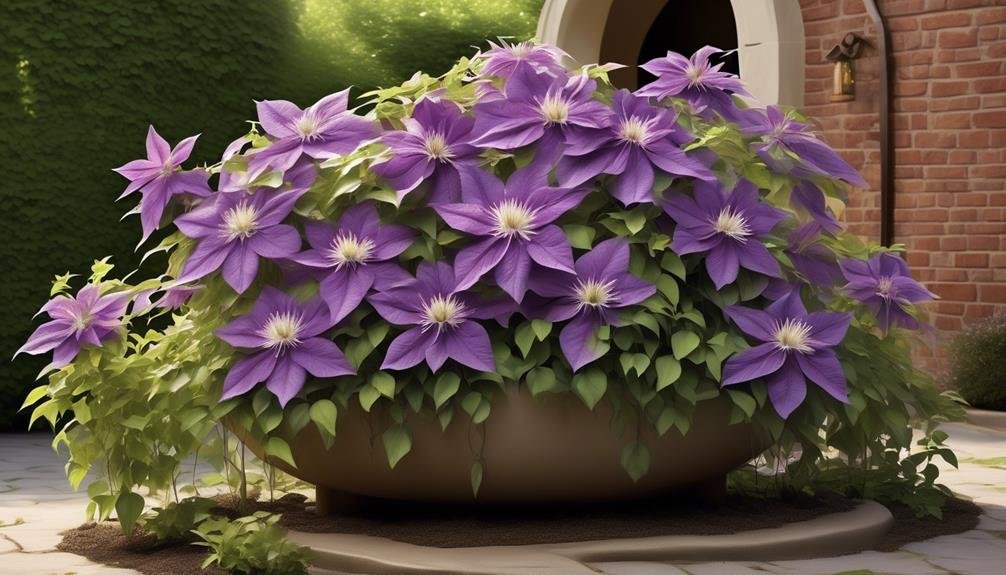
Clematis Care Tips for Optimal Growth
Soil and Sun:
Clematis thrives in well-drained soil with full sun or partial shade. It prefers fertile soil with a neutral pH.
Watering:
Keep the soil consistently moist, but not waterlogged, especially during dry periods. Mulching can help retain soil moisture.
Pruning:
Essential for promoting new growth and abundant flowering. In late winter or early spring, prune all dead and weak stems. For established plants, remove a third of the top growth.
Support:
Clematis is a climbing plant, so providing support such as trellises or fences is crucial for the climbing stems to grow and flourish.
Common Problems:
Clematis is prone to fungal diseases like powdery mildew, leaf spot, and wilt diseases. Proper air circulation and avoiding overhead watering can help prevent these issues. Regular inspection for pests such as aphids, slugs, and snails is important. Good garden hygiene, like removing plant debris and fallen leaves, can help prevent diseases and pests.
Following these care tips and addressing common problems and pests will help ensure that your Clematis flowers remain healthy and vibrant.
Are Clematis and Delphinium Both Suitable for Florist Bouquets?
Yes, both clematis and delphinium are popular types of florist flowers, often used in beautiful bouquets. Their delicate and colorful blooms add a whimsical touch to any arrangement. Clematis is known for its star-shaped flowers, while delphinium boasts tall spires of vibrant petals, making them both suitable choices for florist bouquets.
Conclusion
Clematis is a popular florist flower known for its long vase life, vibrant colors, and large showy blooms. Varieties such as Clematis Abundance, Clematis Alba, Clematis Alba Luxurians, and Clematis Alionushka offer a wide range of options for floral arrangements.
Their strong and flexible stems make them easy to work with, and their delicate fragrance adds to the overall ambiance of any bouquet. Clematis is a top choice for creating stunning and long-lasting floral displays.

